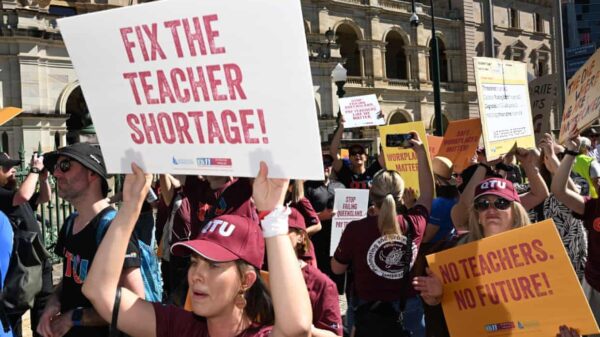UPDATE: Urgent job cuts are on the horizon for numerous ASX firms as rising wage pressures and economic challenges intensify. Microsoft’s CEO, Satya Nadella, has confirmed that the company will implement significant layoffs, reflecting a broader trend impacting major corporations globally.
In a heartfelt memo to staff, Nadella stated, “These decisions are among the most difficult we have to make,” acknowledging the personal toll on affected employees. This announcement comes as the technology giant grapples with its workforce of approximately 230,000 worldwide, where feedback and explanations for the layoffs have reportedly been minimal, leaving many employees stunned.
The urgency surrounding job cuts is escalating as firms seek to navigate the turbulent economic landscape. As 150 members of the S&P 500 prepare to report earnings, companies like Bank of America and Wells Fargo are touting workforce reductions as strategic moves to enhance profitability. Bank of America’s CEO, Brian Moynihan, revealed staff numbers have decreased from 300,000 to 212,000 over the past 15 years, while Wells Fargo’s Charlie Scharf emphasized using attrition to manage headcount effectively.
The situation is particularly concerning for Australian firms as the ASX 200 hovers near record levels despite rising operational costs. Market analysts predict that the upcoming August reporting season will reveal similar trends in Australia. Chris Nicol, an equity strategist at Morgan Stanley, warns that labor costs will dominate discussions among Australian investors, who are already facing pressure for earnings growth.
The pressure on wages has sharply increased since the pandemic, with productivity-adjusted wage growth skyrocketing from an average of 1% (2012-2019) to about 6% (2022-2024). The recent 3.5% increase in the minimum wage, effective July 1, further compounds these challenges, signaling a persistent rise in labor costs that could severely impact profit margins.
Identifying the ASX companies most vulnerable to these wage pressures, Nicol highlights firms like Ramsay Health Care (64% labor costs to revenue), Hub24 (62%), Steadfast Group (60%), and Qantas (41%). These companies, among others, may soon face critical decisions regarding workforce reductions as they adapt to the changing economic environment.
The impending cuts are not limited to tech giants; several major employers across Australia, including Telstra, Westpac, and Woolworths, have already initiated significant cost-cutting measures. As Rio Tinto amplifies its productivity campaign and Coles Group and Endeavour Group engage in efficiency drives, the trend toward workforce reductions appears poised to escalate.
The potential shift in the balance of power between capital and labor could reshape the job market in Australia, which has remained resilient despite low unemployment rates. As companies look to streamline operations and enhance profitability, the question remains: will this wave of job cuts soon reach Australian shores?
Stay tuned as this developing story unfolds, with more updates expected in the coming days. The implications for employees, investors, and the broader economy are profound, making it imperative for stakeholders to remain vigilant.


































































